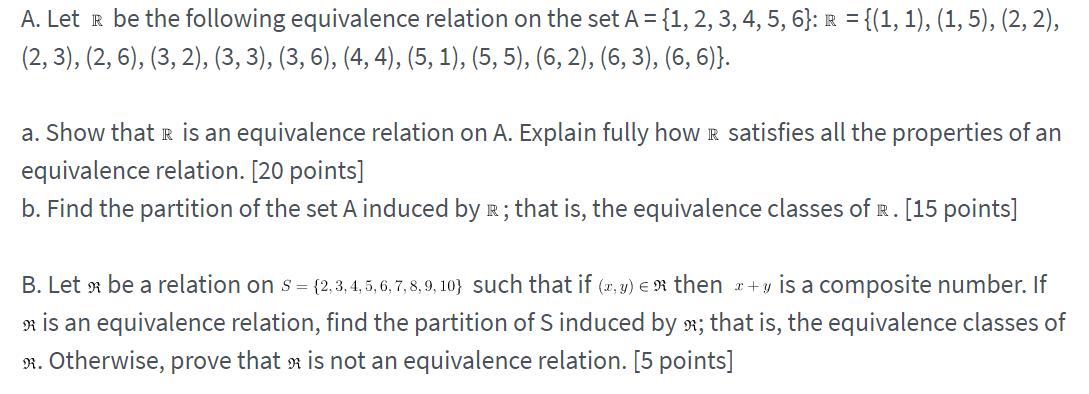Answered step by step
Verified Expert Solution
Question
1 Approved Answer
A. Let R be the following equivalence relation on the set A = {1, 2, 3, 4, 5, 6): R = {(1, 1), (1,

A. Let R be the following equivalence relation on the set A = {1, 2, 3, 4, 5, 6): R = {(1, 1), (1, 5), (2, 2), (2, 3), (2, 6), (3, 2), (3, 3), (3, 6), (4, 4), (5, 1), (5, 5), (6, 2), (6, 3), (6, 6)}. a. Show that I is an equivalence relation on A. Explain fully how R satisfies all the properties of an equivalence relation. [20 points] b. Find the partition of the set A induced by R; that is, the equivalence classes of R. [15 points] B. Let > be a relation on s={2,3,4,5,6,7,8,9,10} such that if (,y) e then +y is a composite number. If * is an equivalence relation, find the partition of S induced by ; that is, the equivalence classes of *. Otherwise, prove that is not an equivalence relation. [5 points]
Step by Step Solution
There are 3 Steps involved in it
Step: 1
a To show that R is an equivalence relation on A 1 2 3 4 5 6 we need to verify three properties 1 Re...
Get Instant Access to Expert-Tailored Solutions
See step-by-step solutions with expert insights and AI powered tools for academic success
Step: 2

Step: 3

Ace Your Homework with AI
Get the answers you need in no time with our AI-driven, step-by-step assistance
Get Started


